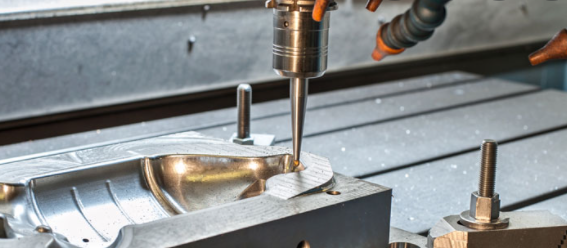It is used to cast metal items using a die casting die. A die-casting die forging machine’s specific die-casting die forging tool is used to complete the die-casting process. Die casting is a manufacturing technique in which molten metal is poured into a mold and molded into a finished product. The mold’s cavity surface may be moved. Because it is compressed and forged using a liquid metal cooling technique that removes shrinkage problems, but also reaches shattered grains in its internal structure, it is known as “liquid metal forging”. The blank’s mechanical qualities have been vastly enhanced in every way. In this die casting die design guide, we are going to show you 7 tips to design it!

Die Casting Die Design Guide
1. Zn Alloy and Aluminum Alloy Die Casting Die are the two most widely utilized materials. At around 450 °C, zinc alloys are often cast in hot chamber die-casting. Hot chamber die casting uses a crucible, and the residual materials may be drawn back into the crucible for recycling. Cold chamber die-casting is used to produce aluminum alloy, which is heated to between 600°C and 700°C. Die casting in a cold chamber is done by pouring a specified amount of material into the mold and then pressing down on the mold with a mallet. Die casting machines with vertical axes dominate the cold chambers. In the higher layer, the liquid metal moves more quickly than in the bottom layer. As a last step, it is sprayed out in one go. Die-casting dies for zinc alloys cannot be the same as those for aluminum alloys. Zinc alloy shrinkage is typically 0.5 percent, while aluminum alloy shrinkage is typically 0.6 percent.
2. In die-casting, the guide post is often located in the front die, and the formwork is somewhat thicker than the plastic die. All die bases are of the ch type, not the Ci type. It is not possible to add a spring to the return lever.
3. Die core steels H13, SKD61 or 8407 are typically chosen for their hrc48-52 heat treatment, which is similar to plastic dies’ hrc48-52 treatment.
4. Generally, the layout is symmetrical. In cold pressing, water is normally eccentric from the side and the product is at least 40mm away from the mold edge.
5. Generally, the shunt cone is 30 degrees higher and has a 5-degree slope. A diameter of 50 is considered to be the industry standard.
6. At least 20-30 inches wide and 8-10 inches deep, the trapezoidal cross flow channel has a slope of 15-20 degrees on one side and r2-3 at its bottom section. In most cases, it may be accessed from the back mold. It may be opened in the front mold if it is arranged in four rows. For the most part, a blind flow channel is included in the cross-flow channel design.. Direct punching and feeding of rubber in a tangential direction is not permitted. Fans, Ts, and combs are the most widely utilized shapes, and the process stages are typically altered to vary the speed and enhance quality.
7. Zinc alloy’s flow channel is comparable to a plastic mold’s. At 6-7 degrees, it’s generally always open, and the slope is 5-10 degrees. Small molds 3 to 4 are also sufficient. Zinc alloy’s gate sleeve is attached directly to the front die core, as opposed to the separating surface, as is the case with aluminum alloy. In comparison to aluminum alloy, the shunt cone is substantially longer and steeper on one side.
Function Of Die Casting Die In Production
Die casting die is an important process equipment in die casting production. It plays a very significant role in the smooth progress of production and the quality of castings. It has an interactive and restrictive relationship with die casting production process and production operation.
Its important role is:
– Determines the shape and dimensional tolerance level of castings;
– The pouring system determines the filling condition of molten metal;
– Control and adjust the heat balance of die casting process;
– The strength of the die limits the maximum injection specific pressure;
– It affects the production efficiency of die casting production.
Die Casting Die Structure
Next, through the introduction of the structure of the die-casting die, analyze the function of each component in the die, and have a preliminary understanding and understanding of the basic structure form, fixing method, material selection and heat treatment of the die. It can be seen from the disassembly drawing of the die-casting die structure that the die-casting die is mainly composed of fixed die and moving die. The fixed die is connected with the injection part of the machine and fixed on its head plate The moving die is installed on the middle plate of the die casting machine and closed or separated from the fixed die with the movement of the middle plate of the machine.

